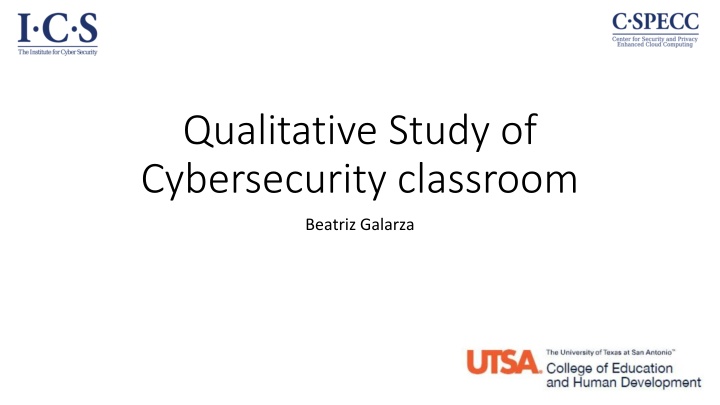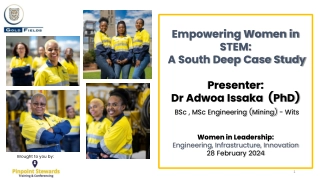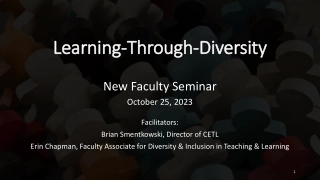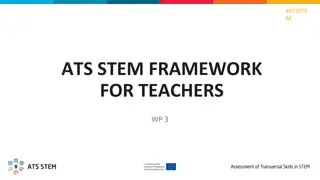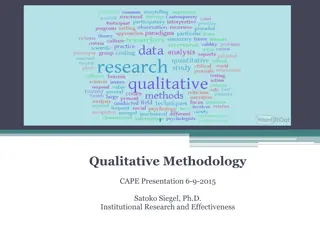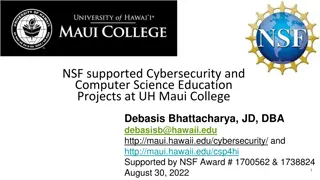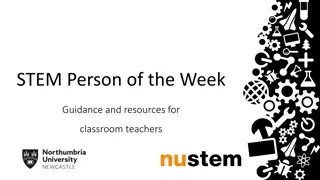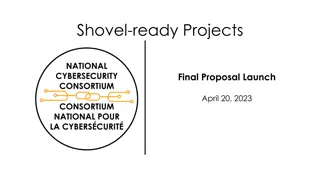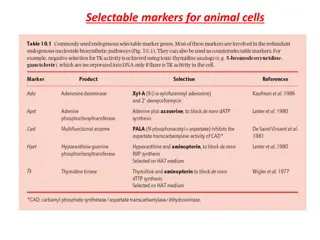Qualitative Study of Cybersecurity in STEM Education
This study by Beatriz Galarza explores the efficacy of Project-Based Learning in enhancing computational thinking among high school students in STEM classes. The research methodology involves direct observations, in-depth interviews, and analysis of artifacts to assess the impact of project-based learning on student learning outcomes and engagement in STEM-related careers. Findings indicate that engaging students through design-oriented projects, such as creating mechanical hands, fosters better understanding of computational thinking concepts.
Uploaded on Feb 26, 2025 | 2 Views
Download Presentation

Please find below an Image/Link to download the presentation.
The content on the website is provided AS IS for your information and personal use only. It may not be sold, licensed, or shared on other websites without obtaining consent from the author.If you encounter any issues during the download, it is possible that the publisher has removed the file from their server.
You are allowed to download the files provided on this website for personal or commercial use, subject to the condition that they are used lawfully. All files are the property of their respective owners.
The content on the website is provided AS IS for your information and personal use only. It may not be sold, licensed, or shared on other websites without obtaining consent from the author.
E N D
Presentation Transcript
Qualitative Study of Cybersecurity classroom Beatriz Galarza
Proposed project and goals The purpose of this study is to find out if Project-Based learning helps understand computational thinking in STEM. PBL provides the contextualized, authentic experiences for students to scaffold learning and build meaningfully powerful STEM concepts supported by language arts, social studies and art. The hypothesis is that if we are able to engage Latinos and women through Project-Based Learning and they learn the fundamental skill of Computational Thinking, they will be more likely to succeed and continue in the pipeline for STEM related careers.
Methodology This qualitative research study will rely on direct observation, in depth interview and analyzing artifacts and materials to obtain information on the efficacy of project-based learning in High School STEM classes. The study consists of observations in Warren High School in the Northside Independent District, I will be observing Mr. Donald Morrison, teacher in technology and engineering. After the observations an open interview to Mr. Morrison will be conducted to understand his rationale of why he chooses the different projects.
Findings FIELD NOTES There were two constant phenomena found, depending on the project: Students working as instruction followers . Students designing mechanical hands After several observations and comparing the process and the interaction between students, the best way to learn computational thinking is if there is a design involved. INTERVIEW Mr. Morrison said that the projects are meant for the students to learn every step of the design. explore the problem, figure it out and see if they can get it working, whether it is a mechanical hand or a robot.
